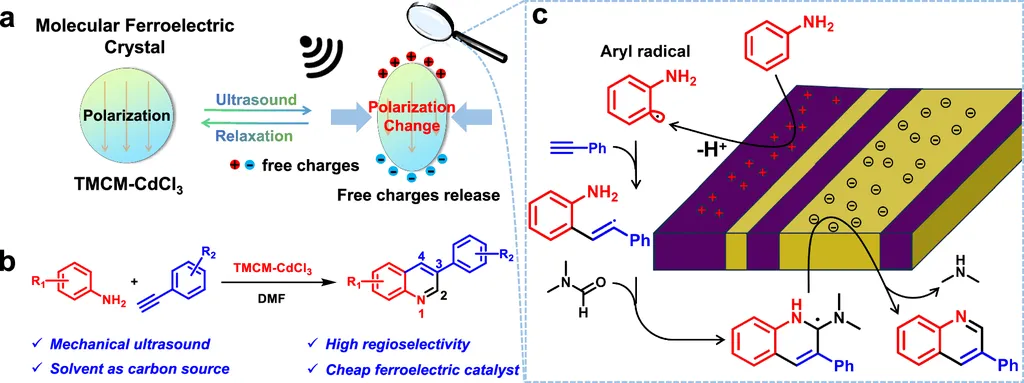In the quest for cleaner energy solutions, scientists are continually exploring innovative avenues to enhance the efficiency of catalytic processes. A recent study published in the *Journal of Physics: Materials* (JPhys Materials), led by Dr. Huma Khan from the Nanochemistry Laboratory at Jamia Millia Islamia in New Delhi and the Department of Chemical Sciences at IISER Berhampur in Odisha, India, has shed light on a promising approach: leveraging ferroelectric materials to boost catalytic performance.
Ferroelectric materials, known for their switchable polarization, have long been studied for their applications in memory devices and sensors. However, their potential in catalysis is a relatively new frontier. Dr. Khan’s research delves into how these materials can significantly improve the efficiency of catalytic reactions, such as water splitting, CO2 reduction, and hydrogen production. These processes are crucial for developing sustainable energy technologies, including fuel cells and solar energy conversion systems.
The study highlights that ferroelectric materials can offer improved control over surface polarization, charge separation, and defect engineering. This control can lead to enhanced reactivity and selectivity in catalytic reactions. “By harnessing the unique properties of ferroelectric materials, we can potentially revolutionize the way we approach catalysis,” Dr. Khan explains. “This could lead to more efficient and cost-effective energy conversion and storage technologies.”
The research also explores the potential of emerging materials, such as heterostructures and 2D materials, which are expanding the possibilities of catalysis. These materials can provide even greater control over the catalytic process, paving the way for more innovative and efficient energy solutions.
The implications of this research are significant for the energy sector. As the world shifts towards renewable energy sources, the demand for efficient and sustainable catalytic processes is higher than ever. Ferroelectric catalysis could play a pivotal role in meeting this demand, driving advancements in energy storage, conversion, and production.
Dr. Khan’s work, published in JPhys Materials (which translates to the Journal of Physics: Materials in English), underscores the importance of interdisciplinary research in addressing global energy challenges. By bringing together insights from materials science, chemistry, and engineering, this study opens up new avenues for innovation in the field of catalysis.
As the energy sector continues to evolve, the integration of ferroelectric materials into catalytic processes could be a game-changer. This research not only highlights the potential of these materials but also sets the stage for future developments in the field. With further exploration and innovation, ferroelectric catalysis could become a cornerstone of sustainable energy technologies, driving us towards a cleaner and more efficient energy future.

